In this guide, I will write about What to Visit in Beijing. These are the most popular and the most visited attractions in Beijing. Whether you’re interested in exploring traditional cultural landmarks, enjoying scenic parks, or experiencing vibrant urban life, this guide will help you navigate through the best of what Beijing has to offer. Let’s dive into the top attractions that make Beijing a must-visit destination.
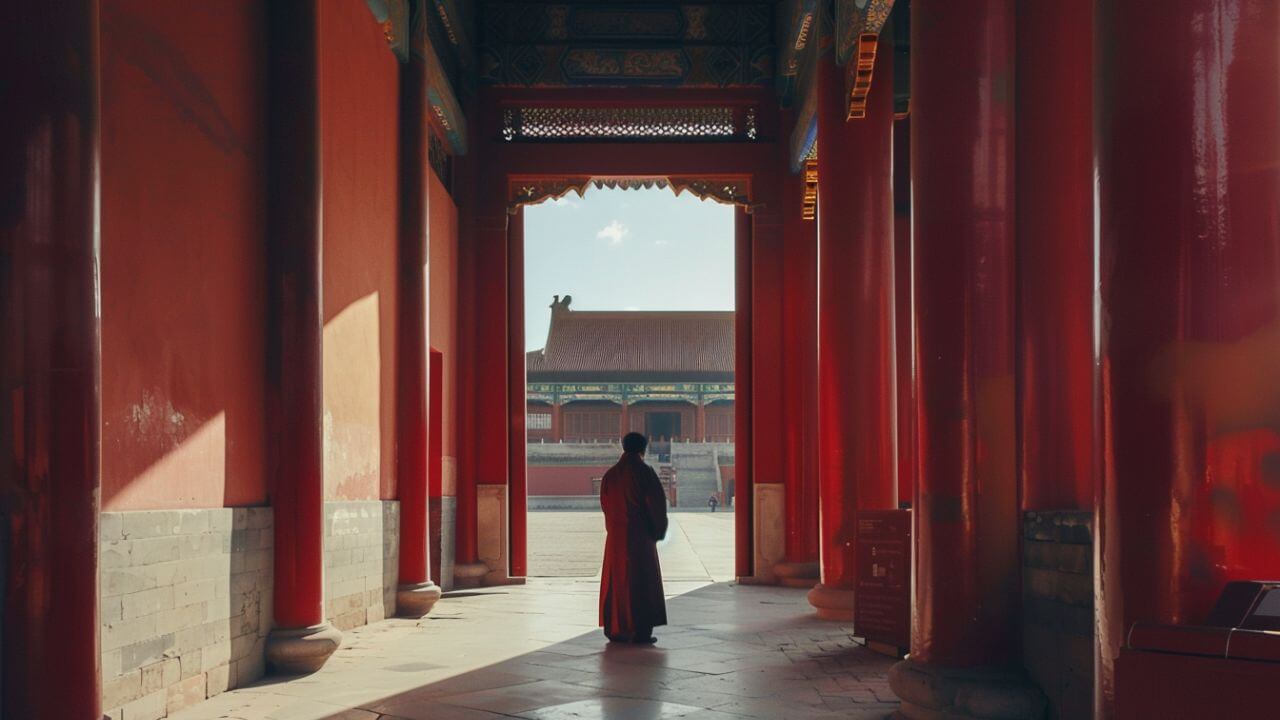
“Beijing is a living museum of China’s history and a gateway to the future.”
The Great Wall of China
The Great Wall of China, built from the 7th century BC to the 16th century AD, stretches over 13,000 miles across northern China. It was originally constructed to protect against invasions from nomadic tribes. Today, well-preserved sections like Badaling and Mutianyu offer visitors stunning views and a glimpse into China’s rich history.
The Great Wall has sections that date back 2,000 years, originating from various historical periods, extending chaotically from scattered remnants in Liaoning province through wind-eroded ruins in the Gobi Desert to faint traces in Xinjiang’s harsh sands. Complemented by natural defenses such as steep mountains, the Great Wall traverses 15 Chinese provinces, principalities, and autonomous regions. For the best experience, start your journey from Beijing, the ideal place to explore this iconic structure.
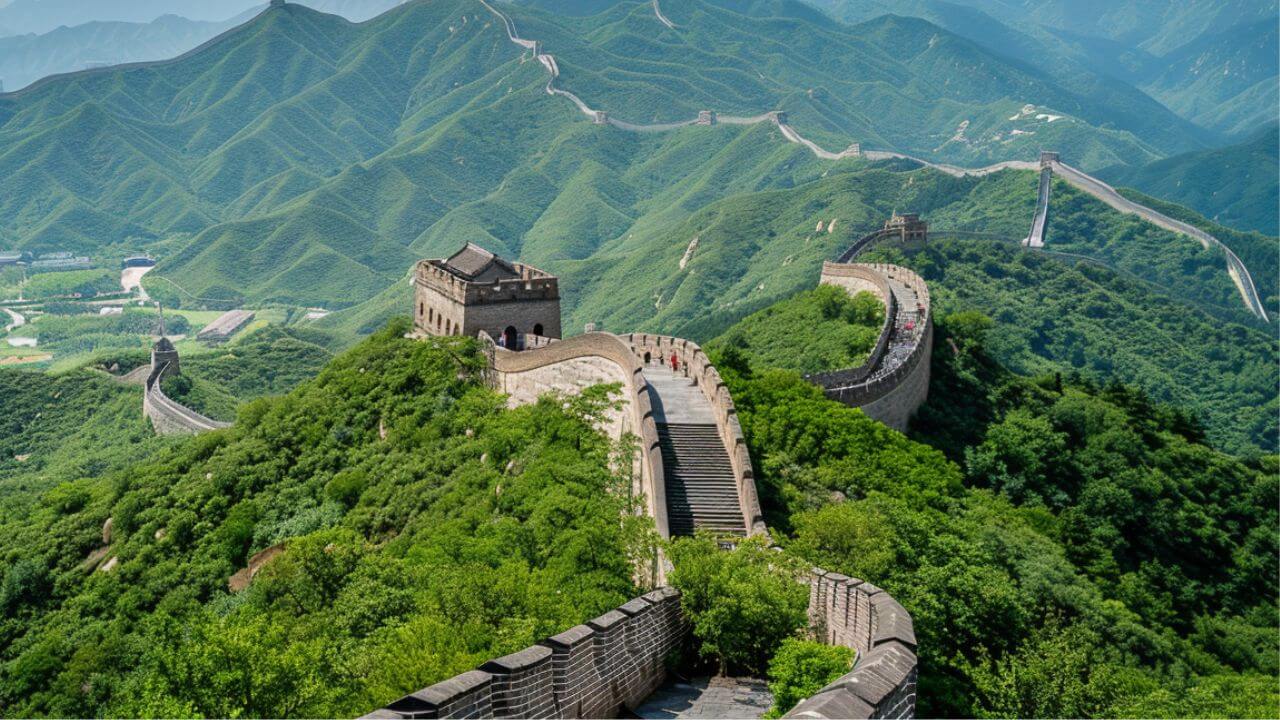
Mutianyu Section
- Price: Adults ¥45
- Hours: 7:30 am to 6:30 pm (March 16 to November 15), 8:00 am to 5:00 pm (November 16 to March 15)
Mutianyu Section is the perfect starting point for those who are for the first time at the Great Wall. Known for its tightly clustered watchtowers and stunning views, it is easily accessible from Beijing and less crowded than Badaling. This section is family-friendly, offering a cable car, chairlift, and toboggan ride. While the expansive ticket hall, restaurant strip, and shuttle-bus system might detract from the sense of a “wild” hike, they make it convenient for families and those seeking a less strenuous visit.
From the large ticket office, shuttle buses (¥15 return) cover the 3 km distance to the cable car station (缆车; Lǎn Chē; one way/return ¥100/120, kids ¥50/60). There are several stairways leading up to the wall, and a chairlift (索道, Suǒdào; one way ¥100, with toboggan ¥120) also referred to as a ‘ropeway’ in local signage.
The toboggan ride (滑道, Huá Dào; one way ¥100, with chairlift ¥120) adds an element of fun, making Mutianyu ideal for families and those preferring fewer steps.
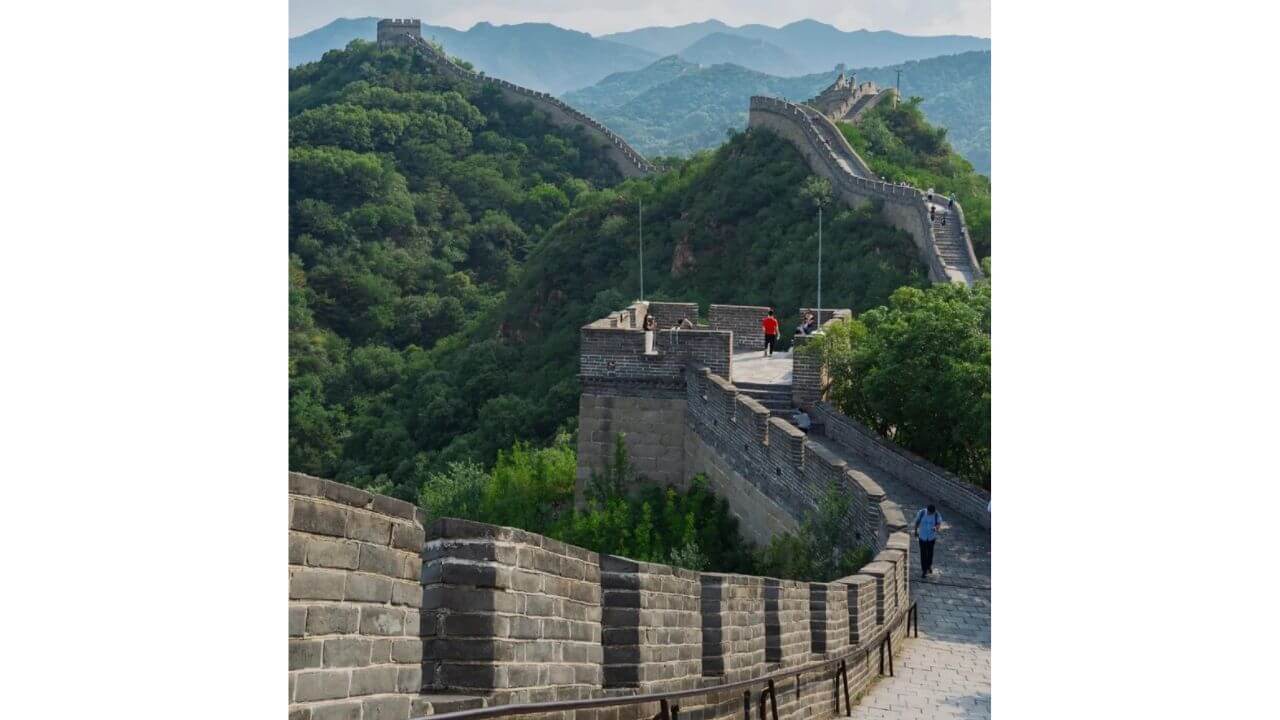
Badaling Section
- Location: 70 km from Beijing
- Price: ¥40 (April-October), ¥35 (November-March)
- Hours: 6am-7pm (April-October), 7am-6pm (November-March)
- Transport: Train 877 or S2 from Huangtudian Station
Badaling Section is situated in a strategic pass through the Jundu Mountains, is the most accessible and busiest section of the Great Wall from Beijing. Despite its heavy commercialization, resembling a bustling ski resort, Badaling remains a popular destination due to its accessibility, scenic views, steep inclines, and comprehensive tourist facilities such as restaurants, disabled access, and cable cars. It is easily manageable as a half-day trip from Beijing.
From the ticket office, visitors typically head north. A brisk one-hour uphill walk or a 10-minute cable car ride (缆车, Lǎn Chē; one way/return ¥100/140; 8am-4:30pm) leads to Watchtower 8 (北八樓, Běi Bā Lóu), the highest point at 1015 meters, marked by a stone stele with Mao’s famous inscription.
The full loop around Badaling is just under 4 km, and you can take a toboggan ride (¥80/100 one way/return) down from Watchtower 4.
The south side of the wall is less crowded and gentler, featuring a cableway (one way/return ¥100/140) and a funicular train to a scenic viewpoint.
The China Great Wall Museum is located at Badaling, open 9am-4pm Tuesday to Sunday, and offers a comprehensive history of the wall from its origins in the Qin dynasty (221–207 BC) to the Ming-era structures seen today. The museum includes English captions and detailed sections on warfare, making it a worthwhile visit for enthusiasts.
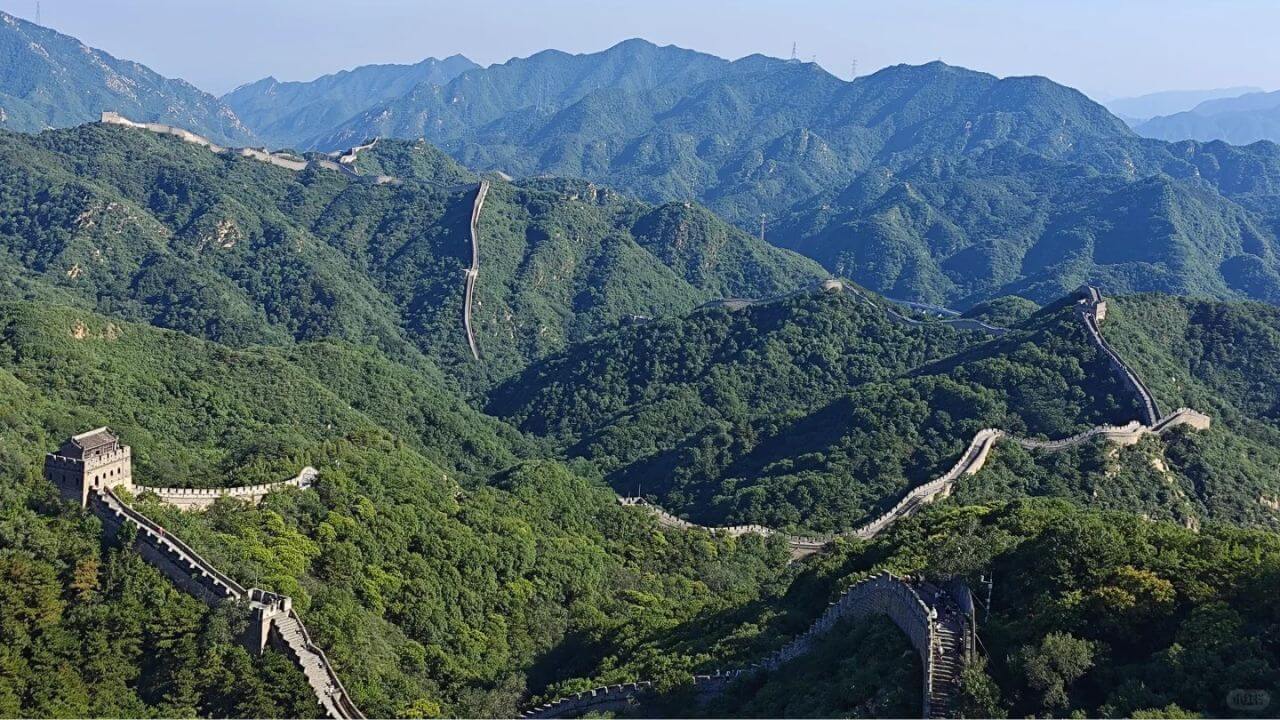
Travel Tips for Visiting The Great Wall of China
Choose the Right Section:
- Badaling: The most popular and well-preserved section, ideal for first-time visitors. It’s easily accessible and has facilities like cable cars for those who prefer not to hike.
- Mutianyu: Less crowded than Badaling, with beautiful scenery and restored sections. It’s great for families and those looking for a more relaxed experience.
- Jinshanling and Simatai: Perfect for adventurous travelers who want to explore less crowded and more rugged sections of the Wall.
- Jiankou: Known for its steep and challenging terrain, this section is best for experienced hikers and offers a more authentic, unrestored experience.
Best Time to Visit:
- Spring (April to June): Enjoy mild weather and blooming flowers.
- Autumn (September to November): Experience cool temperatures and stunning fall foliage.
- Summer: Avoid visiting in July and August due to high temperatures and large crowds.
- Winter: While cold, winter offers a quieter experience with fewer tourists and the possibility of seeing the Wall covered in snow.
Wear Appropriate Clothing:
- Footwear: Sturdy hiking shoes or sneakers are essential, as the Wall can be uneven and steep.
- Clothing: Dress in layers to accommodate changes in weather. In summer, lightweight, breathable clothing is ideal, while in winter, warm, insulated clothing is necessary.
- Sun Protection: Bring a hat, sunglasses, and sunscreen to protect yourself from the sun, especially during summer.
Plan Your Transportation:
- Public Transport: Many sections, like Badaling and Mutianyu, are accessible by bus or train from Beijing. Research the schedule and plan your trip accordingly.
- Private Tour: Consider joining a guided tour for convenience and a more in-depth understanding of the Wall’s history.
- Self-Drive: If you prefer flexibility, renting a car is an option, but be prepared for local driving conditions and parking availability.
Start Early:
- Beat the Crowds: Arriving early in the morning allows you to avoid the busiest times, providing a more peaceful experience and better photo opportunities.
- Maximize Daylight: Starting early also gives you more time to explore the Wall and enjoy the scenery without feeling rushed.
Local Guides:
- Hire a Guide: If you want to learn more about the history and significance of the Great Wall, consider hiring a local guide. They can provide valuable insights and enhance your experience.
The Forbidden City
- Location: Beijing, China
- Built: 1406-1420
- Original Purpose: Imperial Palace for the Ming and Qing Dynasties
- Area: 180 acres
- Buildings: Approximately 980 surviving buildings
- UNESCO World Heritage Site: Since 1987
- Chinese Name: 故宫 (Gùgōng), meaning “Former Palace”
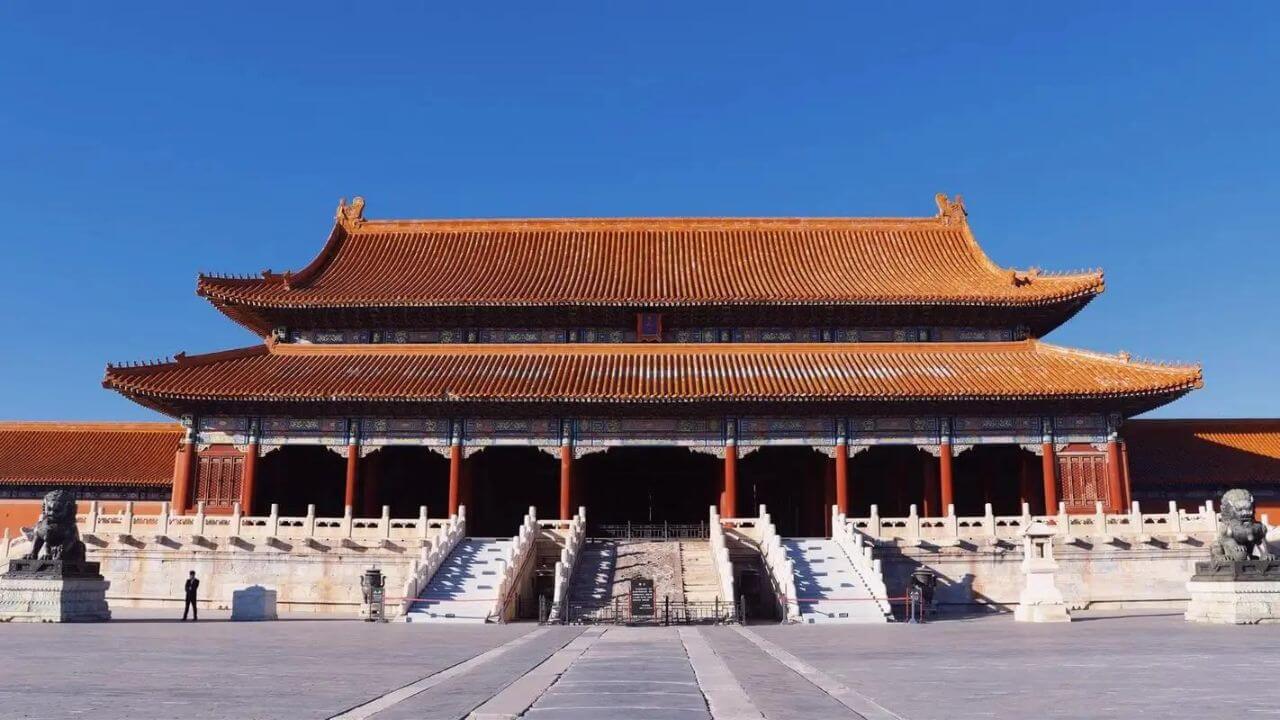
Key Sections of Forbidden City
Outer Court
- Hall of Supreme Harmony (Taihe Dian): The largest hall, used for ceremonial occasions. This grand hall is where the emperor held court, conducted state affairs, and celebrated major events such as coronations, weddings, and New Year ceremonies.
- Hall of Central Harmony (Zhonghe Dian): A smaller hall where the emperor prepared and rested before ceremonies. It served as a space for the emperor to gather his thoughts and practice speeches or rituals in a more private setting.
- Hall of Preserving Harmony (Baohe Dian): Used for banquets and imperial examinations. This hall was also a venue for important feasts and where the final stage of the imperial examination, a highly competitive and prestigious test for civil service positions, was conducted.
Inner Court
- Palace of Heavenly Purity (Qianqing Gong): The emperor’s living quarters. This palace was the main residence of the emperor and a key part of the Inner Court. It was a symbol of the emperor’s supreme power and a private space for daily life and administrative work.
- Hall of Union (Jiaotai Dian): Where the imperial seals were stored. This hall symbolizes the unity of heaven and earth and housed the imperial seals, which were crucial for state documents and decrees.
- Palace of Earthly Tranquility (Kunning Gong): The empress’s residence. This palace was the main living area for the empress and a place for significant ceremonies, such as the wedding night of the emperor and empress.
Imperial Garden
- A beautiful garden with ancient trees, rockeries, and pavilions, used for leisure and relaxation. The garden offered a serene retreat for the imperial family, featuring picturesque landscapes, elegant pavilions, and artistic rock formations. It was a place for the emperor, empress, and their family to unwind, enjoy the natural beauty, and engage in leisurely activities.
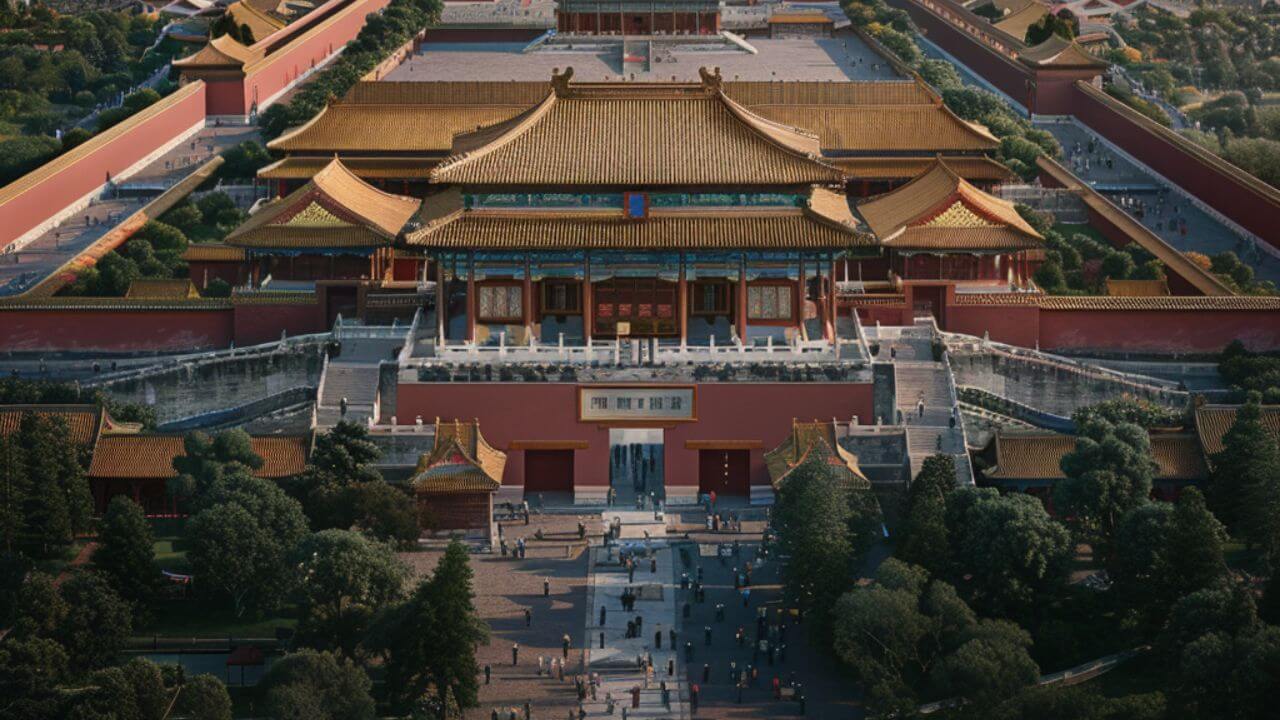
Travel Tips
Best Time to Visit:
- Avoid peak hours (late morning and early afternoon) and visit during off-peak seasons (late fall or early spring) for fewer crowds.
- Weekdays are generally less crowded than weekends.
Tickets:
- Purchase tickets in advance online, especially during peak tourist seasons.
- Ticket Prices: Standard ticket ¥60 (April to October) and ¥40 (November to March).
Getting There
- Subway: Take Line 1 to Tiananmen East or Tiananmen West station, or Line 2 to Qianmen station.
- Bus: Multiple bus routes service the area, including routes 1, 2, 4, 5, and 10.
Guided Tours:
- Audio guides are available in multiple languages and provide detailed information about the various sections.
- Hire a local guide for a more in-depth understanding of the historical and cultural significance.
What to Bring:
- Comfortable walking shoes: The site is extensive and requires a lot of walking.
- Water and snacks: There are limited options inside, especially during off-peak times.
- Sunscreen and hat: Protection from the sun is important, especially in summer.
Photography:
- Photography is allowed, but some interior areas may prohibit flash photography. Always respect the signs.
Explore Beyond the Main Halls:
- Venture into less crowded areas such as the galleries and exhibitions, which provide fascinating insights into the Forbidden City’s history and artifacts.
Temple of Heaven
Don’t expect to see worshippers at prayer; this is not so much a temple as a place of arcane, Confucian-inspired statecraft.
- Location: Beijing, China
- Built: 1420 during the Ming Dynasty
- Original Purpose: A ceremonial site for emperors to pray for good harvests
- Area: 2.73 square kilometers
- UNESCO World Heritage Site: Since 1998
- Chinese Name: 天坛 (Tiāntán)
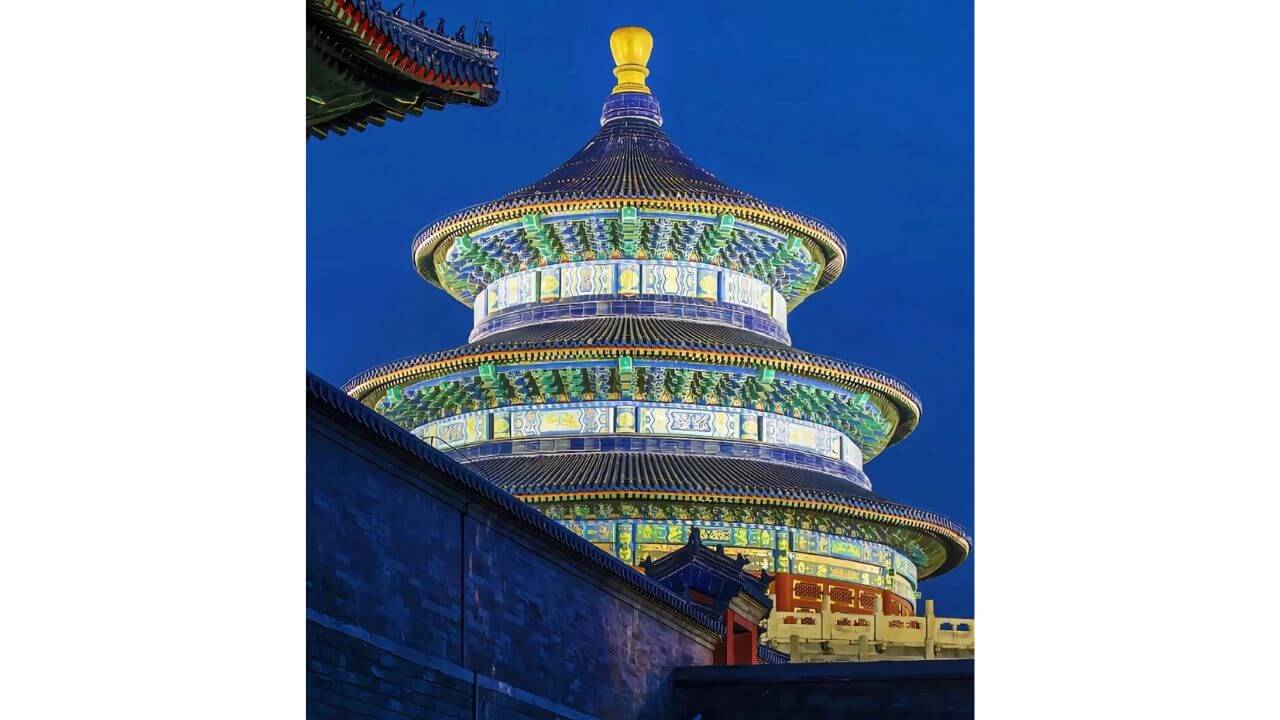
Key Sections at Temple of Heaven
Hall of Prayer for Good Harvests:
- The iconic triple-gabled structure where emperors prayed for bountiful harvests. This magnificent hall, standing on a three-tiered marble terrace, is the most recognizable building in the complex. It was here that the emperor, known as the Son of Heaven, would perform rituals to ensure a good harvest. The hall is constructed entirely of wood without using a single nail and is richly decorated with symbolic colors and motifs representing heaven and earth.
Imperial Vault of Heaven:
- Smaller, circular buildings housing the ceremonial tablets. This hall is located on a single level of marble and is surrounded by a smooth, circular wall known as the Echo Wall. The Imperial Vault of Heaven was used to store the tablets of the Heavenly Gods, which were used in the annual winter solstice ceremonies. The building is an excellent example of Ming Dynasty architecture and is notable for its intricate carvings and decorations.
Circular Mound Altar:
- Open-air altar used for annual ceremonies to worship heaven. This three-tiered circular marble platform is where the emperor would conduct the Heaven Worship Ceremony during the winter solstice. The altar’s design is highly symbolic, with the number of stones and steps adhering to ancient cosmological principles. The central stone on the top tier, known as the Heart of Heaven, was the spot where the emperor would stand to communicate directly with the heavens.
Echo Wall:
- A circular wall known for its acoustic properties. Surrounding the Imperial Vault of Heaven, the Echo Wall is famous for its ability to transmit sound over long distances. A whisper at one end of the wall can be clearly heard at the other end due to the wall’s precise construction. This acoustic phenomenon was designed to symbolize the voice of the heavens, reinforcing the sacred nature of the temple.
Long Corridor:
- A covered walkway that connects the Hall of Prayer for Good Harvests with the Imperial Vault of Heaven and the Circular Mound Altar. The Long Corridor is adorned with beautifully painted scenes depicting landscapes, flora, and fauna. It served both a practical and ceremonial purpose, providing a sheltered path for the emperor and his entourage during ritual processions.
Seven-Star Stone Group:
- A collection of stones arranged to resemble the Big Dipper constellation. Located near the Hall of Prayer for Good Harvests, these stones symbolized the emperor’s connection to celestial powers. The arrangement was believed to enhance the emperor’s ability to communicate with the heavens and ensure harmony between the earth and the celestial realm.
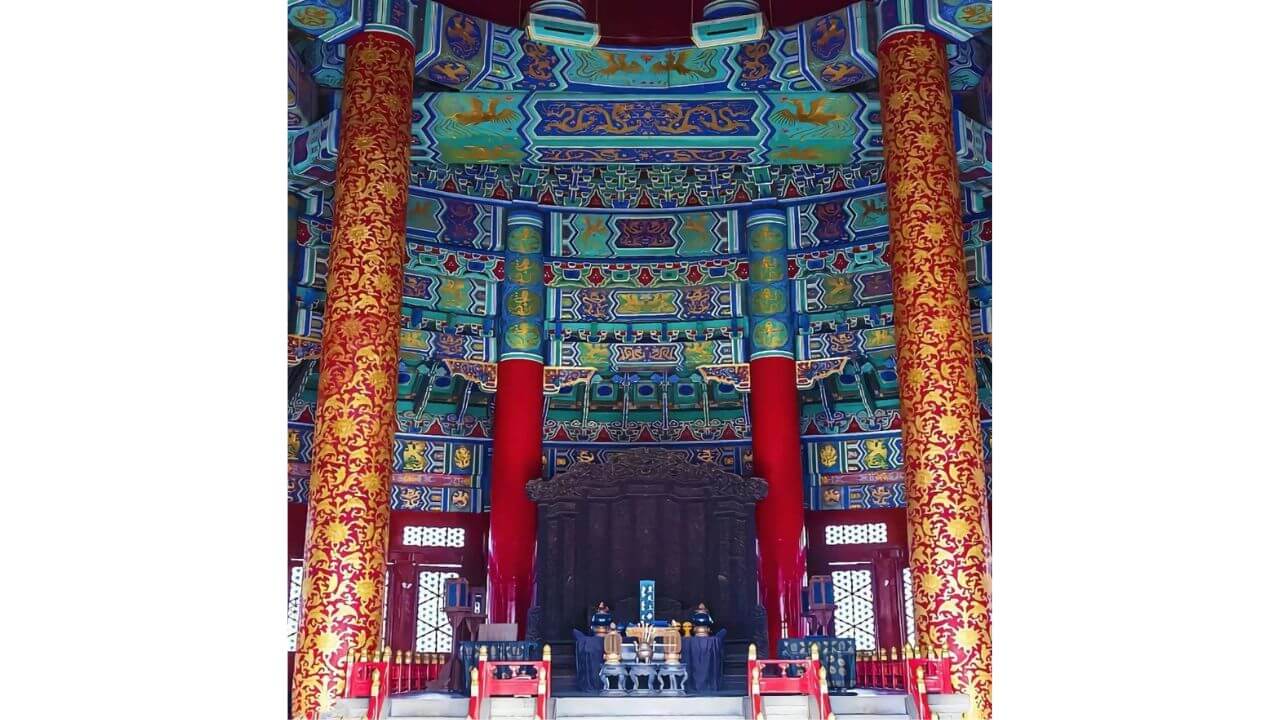
Travel Tips
Best Time to Visit:
- Early morning to avoid crowds and enjoy the park-like setting.
- Spring and autumn for the best weather.
Tickets:
- General Entry: ¥15 (low season), ¥34 (high season)
- Combined Ticket (includes key sites): ¥34 (low season), ¥28 (high season)
Getting There:
- Subway: Line 5 to Tiantan Dongmen (Temple of Heaven East Gate) Station.
- Bus: Multiple routes, including buses 6, 34, 35, and 36.
What to Bring:
- Comfortable walking shoes for exploring the large grounds.
- Water and snacks, though there are vendors inside the park.
Explore the Surrounding Park:
- Enjoy the serene park surrounding the temples, where locals practice Tai Chi and fly kites.
Summer Palace
Quick Facts
- Built: Originally in 1750, restored in 1886 after being destroyed in 1860
- Area: 2.9 square kilometers
- UNESCO World Heritage Site: Since 1998
- Chinese Name: 颐和园 (Yíhéyuán)
What to See
Kunming Lake:
Kunming Lake is the centerpiece of the Summer Palace, and it is ideal for boat rides and scenic views. Covering about three-quarters of the Summer Palace’s area, Kunming Lake is a man-made wonder inspired by the West Lake in Hangzhou. Visitors can enjoy serene boat rides, paddle boating, or take a dragon boat to appreciate the stunning views of the surrounding gardens and architectural marvels.
Longevity Hill:
Offers panoramic views of the palace and lake. Standing 60 meters high, Longevity Hill is dotted with splendid pavilions, halls, and towers. A climb up the hill provides breathtaking panoramic views of Kunming Lake, the entire palace complex, and the distant cityscape of Beijing. Notable structures include the Tower of Buddhist Incense and the Hall of Dispelling Clouds.
Marble Boat:
Marble Boat is a famous lakeside pavilion. Also known as the “Boat of Purity and Ease,” this unique structure is made of marble and wood, resembling a traditional Chinese boat. It symbolizes the stability and permanence of the Qing Dynasty. The Marble Boat offers a picturesque spot for photography and relaxation by the water’s edge.
Seventeen-Arch Bridge:
Connects the eastern shore to South Lake Island. This iconic bridge, with its 17 arches, spans the eastern end of Kunming Lake and leads to Nanhu Island (South Lake Island). It is renowned for its elegant design and the 544 carved stone lions that adorn its balustrades. The bridge is especially beautiful at sunset and offers excellent views of the lake and surrounding landscapes.
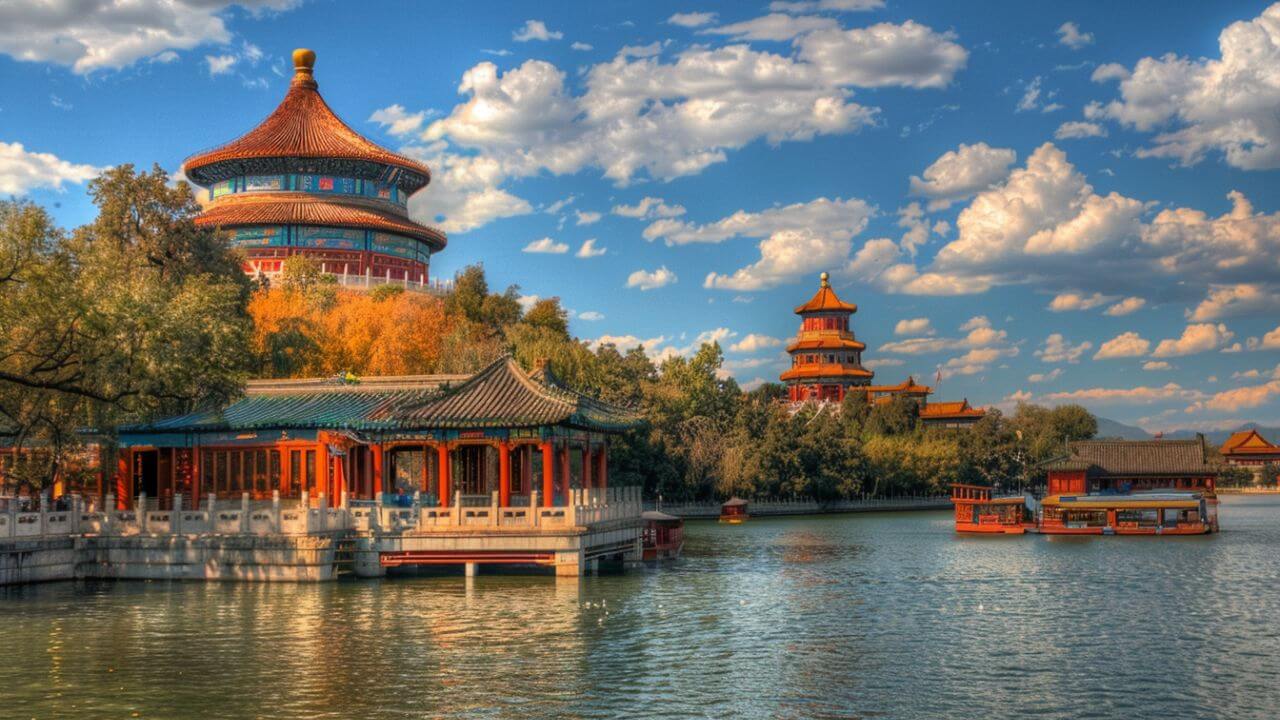
Hall of Benevolence and Longevity:
The main hall used for political affairs. Located near the East Palace Gate, this hall was the primary site for the Empress Dowager Cixi and the emperor to handle state affairs. The hall is intricately decorated with wooden carvings, calligraphy, and traditional Chinese paintings. The throne and furnishings inside reflect the grandeur and authority of the imperial court.
Long Corridor:
A covered walkway decorated with beautiful paintings, perfect for a leisurely stroll. Stretching over 700 meters along the northern shore of Kunming Lake, the Long Corridor is famed for its richly painted beams and pillars, depicting scenes from Chinese mythology, folklore, and classic literature. It provides a shaded and scenic path, allowing visitors to enjoy the artistic details and the lakeside views.
Suzhou Street:
A recreated market street along the water. This charming area replicates the commercial atmosphere of ancient Suzhou, with traditional shops, teahouses, and boutiques lining the canals. Visitors can walk along the narrow streets, enjoy the waterfront ambiance, and purchase souvenirs or sample local snacks. The street reflects the Qing Dynasty’s appreciation for the Jiangnan (south of the Yangtze River) culture.
Garden of Harmonious Pleasures:
A smaller, tranquil garden designed in the style of classical southern Chinese gardens. This secluded area features elegant pavilions, delicate rockeries, and winding paths, creating a peaceful retreat from the more crowded parts of the palace.
Hall of Jade Ripples:
Once the living quarters of Emperor Guangxu, this hall offers a glimpse into the daily life of the emperor. It is surrounded by tranquil gardens and scenic walkways, making it a peaceful spot for reflection.
Pavilion of the Fragrance of Buddha:
Located atop Longevity Hill, this pavilion is a significant religious site within the Summer Palace. It offers stunning views of the entire palace complex and the surrounding area.
Four Great Regions:
An ensemble of Tibetan-style temples and halls located on the northern side of Longevity Hill. These structures highlight the cultural and religious diversity of the Qing Dynasty.
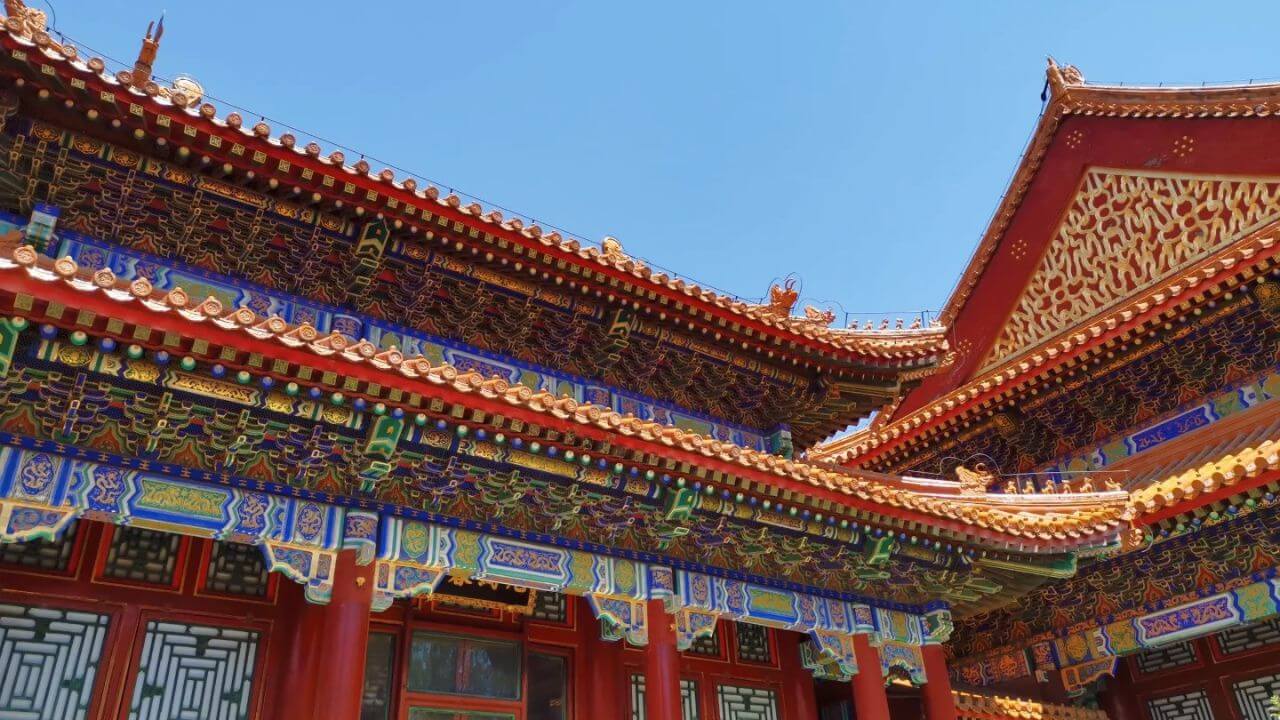
Travel Tips
Best Time to Visit:
- Spring and autumn for pleasant weather and fewer crowds.
- Early morning or late afternoon to avoid peak tourist times.
Tickets:
- April to October:
- General Entry: ¥30
- Through Ticket: ¥60
- Hours: 6:30 am to 6:00 pm
- Sights: 8:30 am to 5:00 pm
- November to March:
- General Entry: ¥20
- Through Ticket: ¥50
- Hours: 7:00 am to 5:00 pm
- Sights: 9:00 am to 4:00 pm
- Audio Guide: ¥40
Getting There:
- Subway: Line 4 to Beigongmen Station (North Palace Gate).
- Bus: Multiple routes, including buses 303, 331, and 346.
What to Bring:
- Comfortable walking shoes for exploring the expansive grounds.
- Sunscreen and a hat for sun protection, especially in summer.
- Water and snacks, although there are vendors inside.
Expectations:
- Prepare for extensive walking and beautiful, historical architecture.
- Enjoy a mix of natural beauty and cultural heritage.
798 Art District
- Location: Dashanzi area, Chaoyang District, Beijing
- Established: Early 2000s
- Chinese Name: 798艺术区 (798 Yìshù Qū)
The 798 Art District, also known as Dashanzi Art District, is a thriving cultural and artistic hub in Beijing. Housed in a complex of decommissioned military factory buildings, this area has transformed into a vibrant space for contemporary art, design, and culture.
What to See
Art Galleries and Studios:
- The district is home to numerous galleries and artist studios showcasing contemporary works by both Chinese and international artists. Key galleries include the Ullens Center for Contemporary Art (UCCA) and the Beijing Commune.
Public Art Installations:
- As you wander through the district, you’ll encounter a variety of public art installations and sculptures, reflecting the area’s creative spirit.
Cafes and Restaurants:
- 798 Art District offers a range of trendy cafes, teahouses, and restaurants, perfect for taking a break and enjoying the artistic atmosphere.
Shops and Boutiques:
- Explore unique shops selling art, designer clothes, crafts, and souvenirs. It’s a great place to pick up something special and support local artists.
Events and Exhibitions:
- The district frequently hosts art exhibitions, fashion shows, film screenings, and cultural events. Check the local schedule to catch special events during your visit.
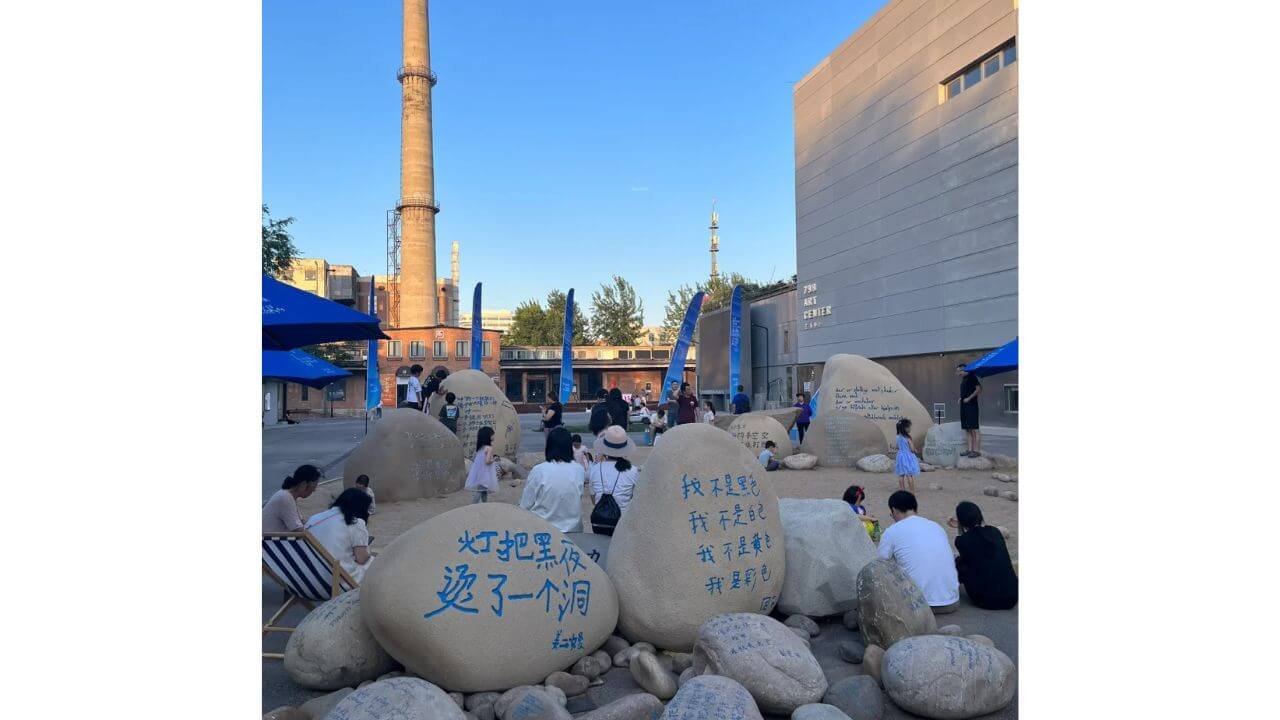
Travel Tips For 798 Art District
Best Time to Visit:
- Weekdays are generally less crowded than weekends, providing a more relaxed atmosphere for exploring.
Getting There:
- Subway: Take Line 14 to Jiangtai Station, then a short taxi or bus ride.
- Bus: Multiple routes, including buses 401, 402, 405, and 445, stop near the district.
What to Bring:
- Comfortable walking shoes for exploring the extensive area.
- A camera to capture the eclectic art and vibrant scenes.
Expectations:
- Prepare for a mix of avant-garde and traditional art, industrial-chic architecture, and a lively, creative environment.
- Many galleries offer free entry, but some exhibitions may have an admission fee.
Etiquette:
- Respect the artists’ works and the space. Photography may be restricted in some galleries, so always ask before taking photos.
Jingshan Park
- Location: Directly north of the Forbidden City, Beijing
- Established: 1179 (Liao Dynasty)
- Area: 23 hectares
- Chinese Name: 景山公园 (Jǐngshān Gōngyuán)
Jingshan Park, located just north of the Forbidden City, is a historic imperial garden offering stunning panoramic views of Beijing. The park is built on an artificial hill made from the soil excavated to create the moat surrounding the Forbidden City.
Highlights at Jingshan Park
Panoramic Views:
- Climb to the top of Jingshan Hill for breathtaking views of the Forbidden City, the Drum and Bell Towers, Beihai Park, and the surrounding cityscape. The highest point, Wanchun Pavilion, is a perfect spot for photography.
Historic Pavilions:
- The park features five pavilions, each with its own unique charm. The Wanchun Pavilion, located at the central peak, is particularly notable.
Peony Garden:
- Visit the Peony Garden, especially in late spring when the flowers are in full bloom, adding vibrant colors to the park.
Ancient Trees:
- Discover the ancient trees, some over 300 years old, adding to the park’s serene atmosphere.
Local Activities:
- Observe local residents practicing Tai Chi, dancing, singing traditional opera, and engaging in other cultural activities, particularly in the mornings.
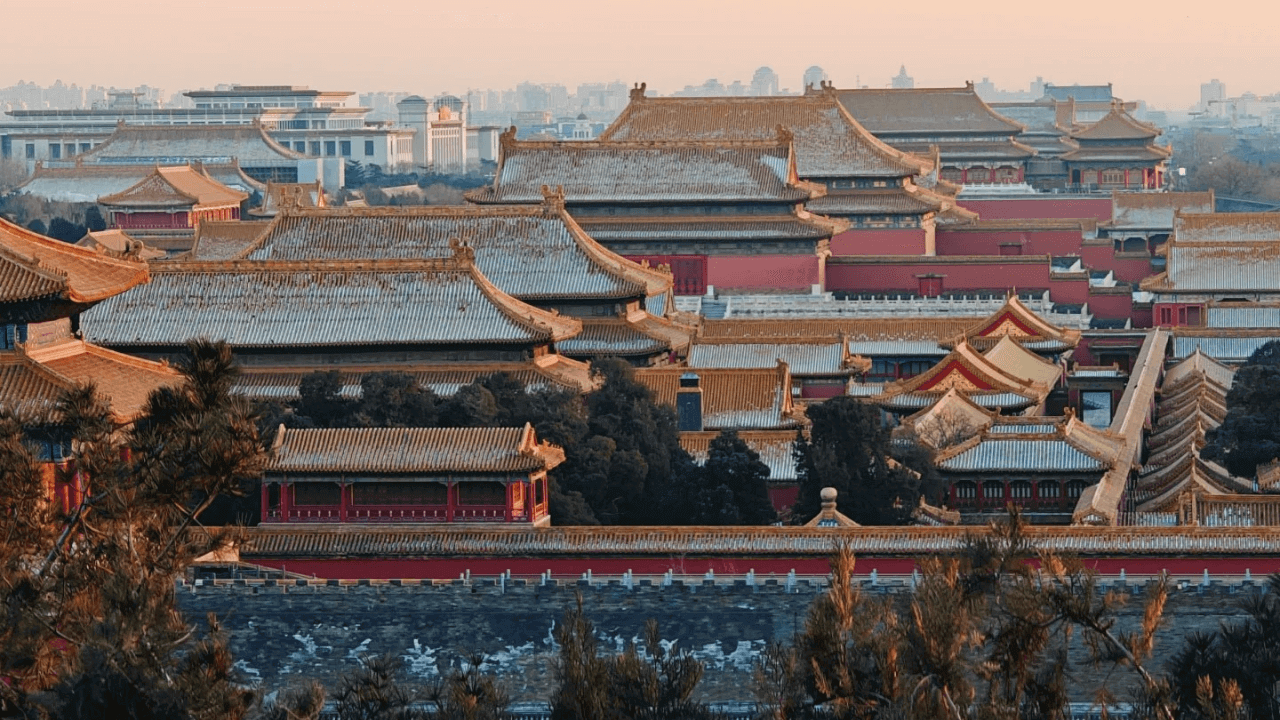
Travel Tips
Best Time to Visit:
- Early morning or late afternoon to avoid the heat and crowds, and to capture the best light for photography.
- Spring and autumn are the most pleasant seasons for visiting, with milder temperatures and beautiful foliage.
Tickets:
- Entry Fee: ¥2 (low season), ¥10 (high season)
Getting There:
- Subway: Take Line 8 to Shichahai Station, then a short walk to the park.
- Bus: Multiple routes, including buses 5, 58, and 60, stop near the park.
What to Bring:
- Comfortable walking shoes for exploring the park and climbing the hill.
- A camera to capture the stunning views and vibrant local activities.
Tips from locals:
- Morning Activities: Arrive early to watch or participate in morning exercises like Tai Chi and local opera performances.
- Photography: The best time for photography is during sunrise or sunset, offering dramatic lighting over the city and Forbidden City.
- Rest Areas: Utilize the benches and rest areas scattered throughout the park for breaks and to enjoy the peaceful surroundings.
Drum & Bell Towers
- Location: Dongcheng District, Beijing
- Built: Originally in 1272 (Yuan Dynasty), reconstructed in 1420 (Ming Dynasty)
- Chinese Names: 鼓楼 (Gǔlóu, Drum Tower), 钟楼 (Zhōnglóu, Bell Tower)
The Drum and Bell Towers are iconic landmarks of Beijing, situated north of the Forbidden City. Historically, these towers played a crucial role in keeping time and marking the hours in the city. Today, they offer visitors a glimpse into ancient Chinese timekeeping and panoramic views of Beijing.
What to See and Expect
Drum Tower
Drum Collection: The Drum Tower houses a collection of 25 drums, including one original drum from the Ming Dynasty still on display. These drums played a crucial role in timekeeping and signaling important events in ancient Beijing.
Drum Performances: Regular drum performances showcase traditional timekeeping rituals, offering visitors a chance to experience the historic rhythm of the city. These performances are not only entertaining but also educational, as they explain the significance of the drums in Beijing’s history.
Panoramic Views: Climb the steep stairs of the Drum Tower for a rewarding view of the surrounding hutongs and modern Beijing. The climb may be challenging, but the panoramic views from the top provide a unique perspective of the city, blending old and new.
Bell Tower
Massive Bronze Bell: The Bell Tower features a massive bronze bell weighing 63 tons, one of the largest and heaviest in China. This bell, also known as the “Yongle Bell,” was cast during the Ming Dynasty and is renowned for its deep, resonant sound.
Historical Significance: Learn about the history and significance of the bell, which was used to mark time and signal important events. The Bell Tower, along with the Drum Tower, played a vital role in the timekeeping system of ancient Beijing, helping to regulate daily life in the city.
City Views: Ascend the wooden staircase of the Bell Tower for an impressive view of the city. The elevated vantage point offers a stunning panorama of Beijing, allowing visitors to see the contrast between the traditional hutongs and the modern skyline.
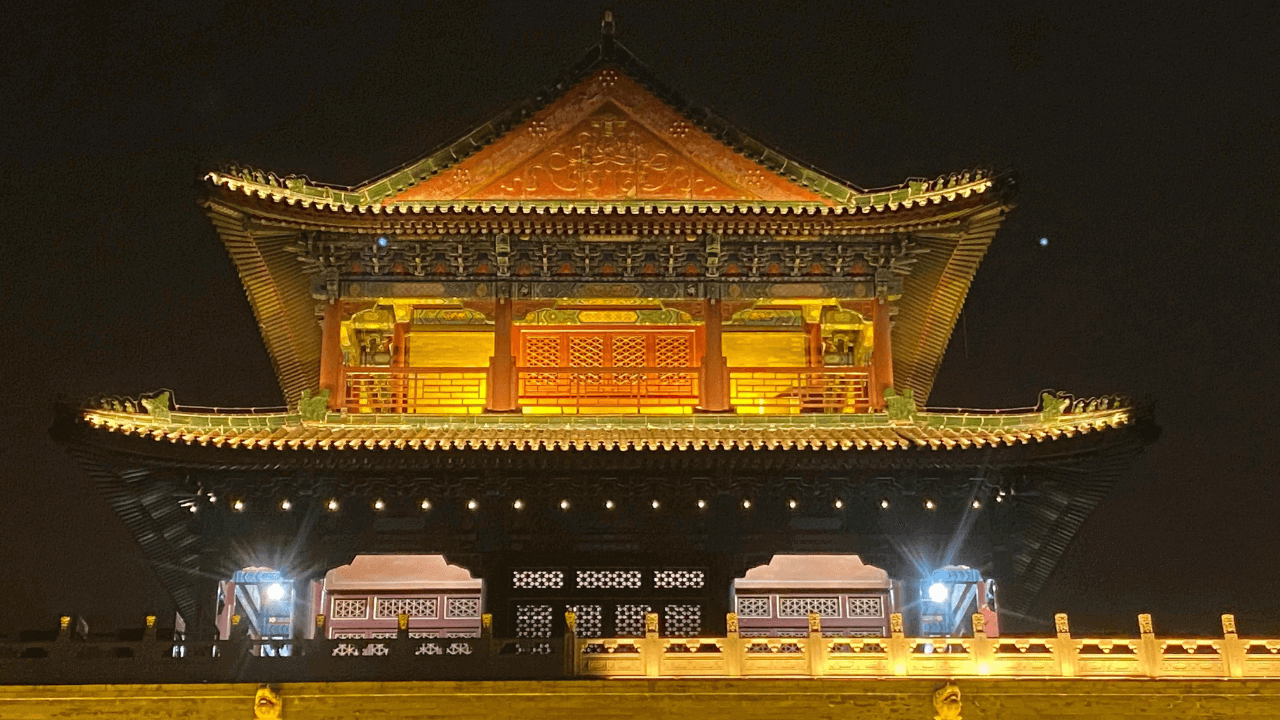
Surrounding Hutongs
Traditional Alleyways: The area around the Drum and Bell Towers is characterized by historic hutongs, narrow alleyways that offer a glimpse into Beijing’s traditional residential life. Wandering through these hutongs provides an authentic experience of the city’s cultural heritage.
Local Culture: Explore the local shops, cafes, and residences in the hutongs to get a sense of the daily life of Beijing’s residents. The hutongs are home to various cultural sites, such as courtyards and temples, reflecting the rich history of the area.
Cultural Insights
Interactive Exhibits: Both towers often feature exhibits that provide insights into Beijing’s history, architecture, and cultural practices. These exhibits enhance the visitor experience by offering context and background information.
Guided Tours: Consider joining a guided tour to learn more about the Drum and Bell Towers from knowledgeable guides. Tours often include historical anecdotes and detailed explanations of the towers’ functions and significance.
Nearby Attractions
Houhai Lake: A short walk from the towers, Houhai Lake is a popular spot for boating, dining, and nightlife. The area around the lake is filled with lively bars, restaurants, and shops, making it a great place to relax after visiting the towers.
Nanluoguxiang: Another nearby attraction, Nanluoguxiang is a famous hutong known for its vibrant atmosphere, trendy boutiques, and historic architecture. It’s an ideal place to shop for souvenirs and enjoy local snacks.
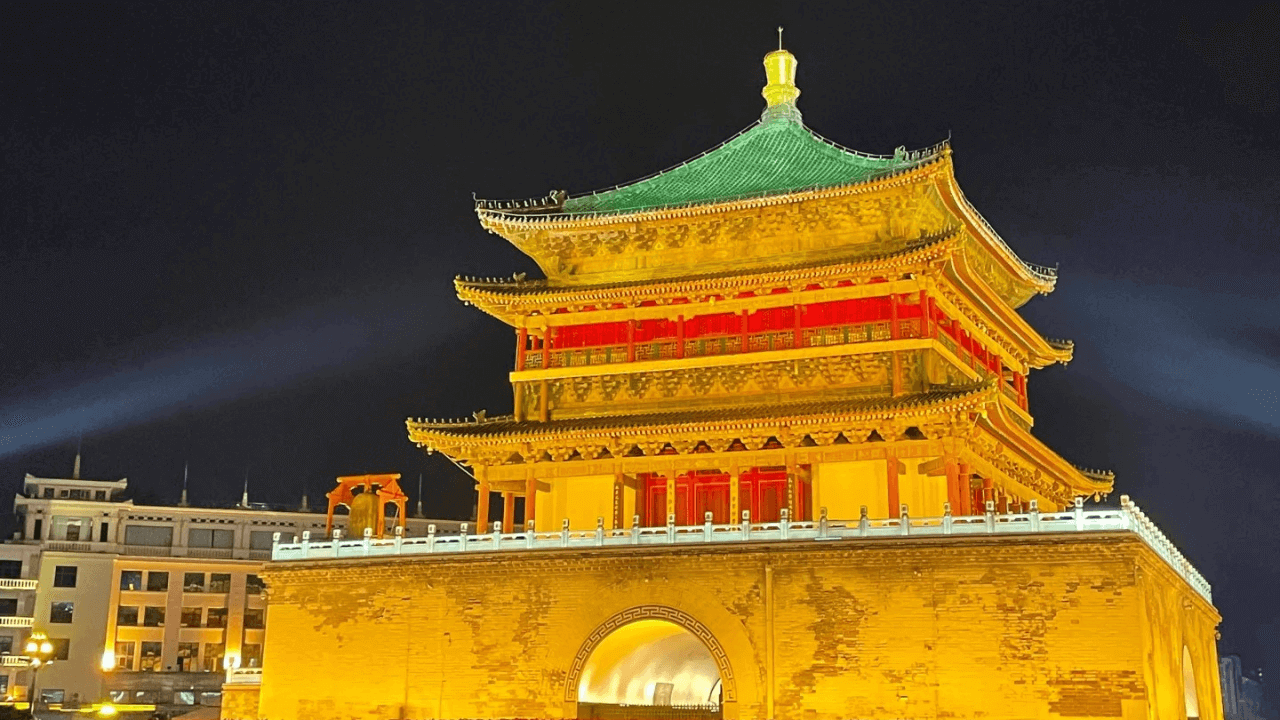
Travel Tips
Best Time to Visit:
- Early morning or late afternoon for fewer crowds and cooler temperatures.
- Clear days offer the best visibility for panoramic views.
Tickets:
- Drum Tower Entry: ¥20
- Bell Tower Entry: ¥15
- Combined Ticket: ¥30
Getting There:
- Subway: Take Line 2 to Guloudajie Station, then walk south for a few minutes.
- Bus: Multiple routes, including buses 5, 60, and 82, stop near the towers.
Local Tips:
- Drum Performances: Check the schedule for drum performances, usually held several times a day, to experience traditional drumming.
- Combine Visits: Explore the nearby Shichahai area and its historic hutongs for a deeper cultural experience.
- Guided Tours: Consider a guided tour to gain insights into the historical significance and stories behind the towers.
Tian’anmen Square
Tiananmen Square is a central landmark in Beijing, it is also a site of immense historical and cultural significance. From the monumental structures and daily ceremonies to the nearby attractions, visiting Tiananmen Square offers a profound glimpse into China’s past and present.
- Location: Central Beijing, China
- Size: 109 acres (440,000 square meters)
- Established: 1651 (expanded in 1958)
- Chinese Name: 天安门广场 (Tiān’ānmén Guǎngchǎng)
- Significance: The largest public square in the world, a symbol of China’s national pride and political history.
What to See and Experience
Tiananmen Gate (Gate of Heavenly Peace):
The iconic gate features a large portrait of Chairman Mao Zedong, where the founding of the People’s Republic of China was declared in 1949.
Monument to the People’s Heroes:
A towering granite obelisk in the center of the square is dedicated to those who fought for China’s liberation.
Mausoleum of Mao Zedong:
The resting place of Mao Zedong, where visitors can view his embalmed body.
Great Hall of the People:
An impressive building used for legislative and ceremonial activities, including meetings of the National People’s Congress.
National Museum of China:
Located on the eastern side of the square, it showcases China’s extensive history and cultural heritage.
Flag-Raising Ceremony:
Witness the daily flag-raising and lowering ceremonies conducted by soldiers of the People’s Liberation Army at sunrise and sunset.
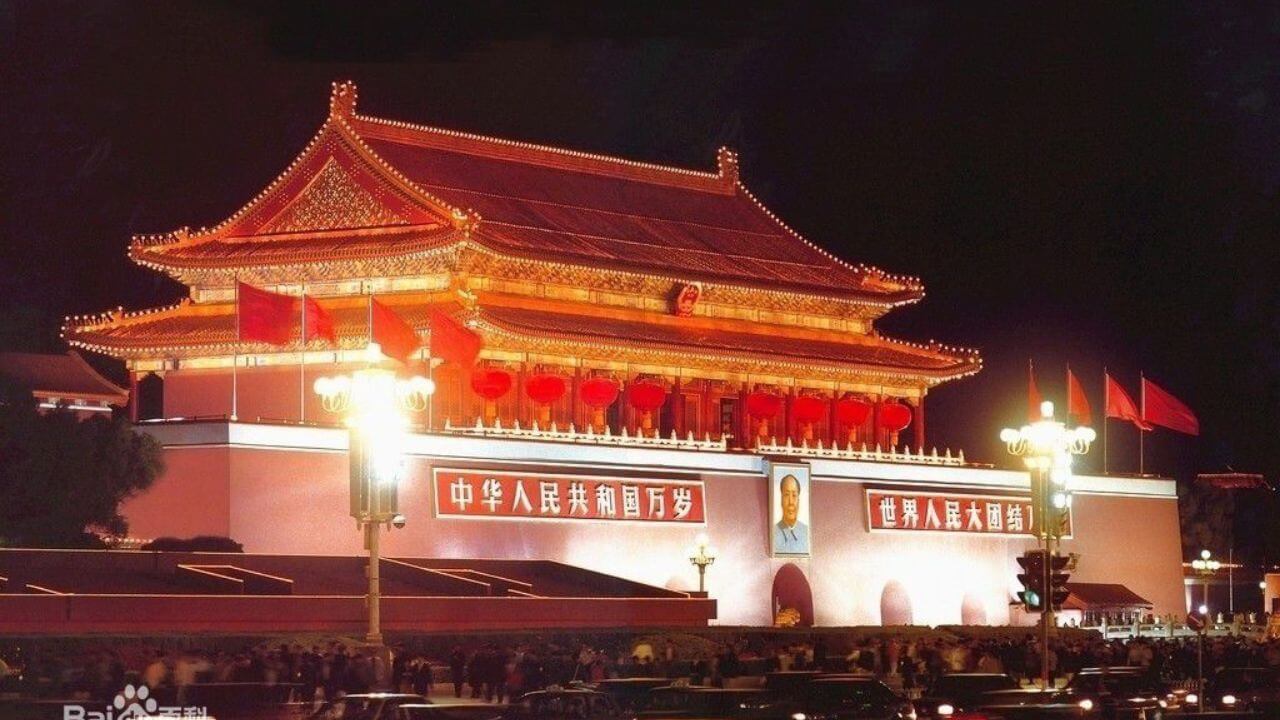
Travel Tips
Best Time to Visit:
- Early morning or late afternoon to avoid the peak tourist hours and to witness the flag-raising or lowering ceremonies.
- During major national holidays, the square can be exceptionally crowded but also beautifully decorated.
Tickets:
- Tiananmen Square: Free entry.
- Mausoleum of Mao Zedong: Free, but tickets are required and can be obtained on-site.
- National Museum of China: Free, but requires a passport for entry.
Getting There:
- Subway: Take Line 1 to Tiananmen East or Tiananmen West stations, or Line 2 to Qianmen Station.
- Bus: Multiple routes, including buses 1, 2, 52, and 82, stop near the square.
What to Bring:
- Valid ID or passport for entry to certain sites like the National Museum and Mao’s Mausoleum.
- Comfortable walking shoes for exploring the expansive square.
- Water and snacks, though there are vendors nearby.
Local Tips:
- Security Checks: Be prepared for security checks at entry points to the square.
- Photography: Photography is allowed, but drones and large camera equipment may be restricted.
- Restrooms: Public restrooms are available but can be crowded; plan accordingly.
Nearby Attractions:
- Forbidden City: Located just north of Tiananmen Square, making it convenient to combine visits.
- Qianmen Street: A historic shopping street just south of the square, perfect for a stroll and some local snacks.

Helen Wang
Travel Advisor & Guide Expert
I started my travel career in 2005 and have since become an expert in Tibet and China’s travel destinations and helping travelers plan unforgettable trips.
For expert travel advice to China or Tibet, feel free to contact me.